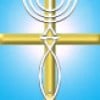MUSIC and SONG = WORSHIP and PRAISE (Part 1) Musical Instruments Used in Religious Practice

"Make a JOYFUL NOISE unto the LORD, all ye lands."
That is the scripture verse (Psalm 100:1 KJV) that always comes to my mind when the topic and question is raised about:
"What are the most appropriate types of music and songs that should be used in our gatherings for worship and praise (and of course - What instruments should also be used or not used?)."
Now I would think that "NOISE" doesn't necessarily sound like music per se, but at least it is "joyfully" being directed to the Lord God on high, and is being requested of ALL the lands. The intent I think is the main emphasis in what is being said here.
WORSHIP: "the act and accompanying attitude of giving honor to God."
This definition was extracted from the meaning of the Greek term for “worship” in the New Testament ("proskuneo"): “To kiss the hand of one in reverence; to fall upon the knees and touch the ground with an expression of profound respect; prostration (a reverent or submissive prone position) to do homage (show of respect) to one or make obeisance (gesture of reverence), whether in order to express respect or to make supplication (prayerful petitioning)."
A reader's question was posed asking:
"How can the church forbid a drum-set as part of the instruments for worship in the church?"
Which has led to the following article and discussion on music and worship altogether...
I think the above verse covers the answer quite nicely, in that scripture does not necessarily reflect WHAT instruments should be used or what kind of music, but HOW they are used to glorify God!
Being musically inclined myself, I felt compelled to address this question with the attention that it truly deserves. So, for the purposes of scrutiny, let's review scripture as it is written in the Holy Bible (the authoritative "Word of God") to look at this topic in more depth
*PSALMS = Songs
The Psalms are a collection of songs written mostly by King David (as he was quite musically gifted and in his youth, being the harpist for King Saul), and also written for and by other "Directors of Music" that might use them as well. They are a large collection of mostly poetic verse that detail a wide variety of aspects that were relevant to the life of David and his times. Most of them reflect a nature of praise and glorification to the Lord and some also feature specific events and topics that were close to the heart of the author(s).
Below we have selected a few in particular that likewise feature the use of song as well as certain musical instruments for reference purposes to this article.
Make a joyful noise unto the LORD, all ye lands. Serve the LORD with gladness: come before his presence with singing. Know ye that the LORD he is God: it is he that hath made us, and not we ourselves; we are his people, and the sheep of his pasture. Enter into his gates with thanksgiving, and into his courts with praise: be thankful unto him, and bless his name. For the LORD is good; his mercy is everlasting; and his truth endureth to all generations.
(Psalm 100 KJV)
Once again, "a joyful noise" being used "gladly" with singing to offer "thanks, praise and blessings" towards the Lord God.
The following Psalm also nicely reflects the manner in which worship and praise was practiced according to scripture:
Praise ye the LORD. Praise God in his sanctuary: praise him in the firmament of his power. Praise him for his mighty acts: praise him according to his excellent greatness. Praise him with the sound of the trumpet: praise him with the psaltery and harp. Praise him with the timbrel and dance: praise him with stringed instruments and organs. Praise him upon the loud cymbals: praise him upon the high sounding cymbals. Let every thing that hath breath praise the LORD. Praise ye the LORD. (Psalm 150 KJV)
This Psalm further reinforces the attitude that is most appropriate (even in the "sanctuary") when glorifying our Lord God with praise and worship. It is obviously NOT a solemn affair but one of great rejoicing with all variety of musical instruments, singing and dancing; also to be enjoyed and participated by everyone in the congregation, not necessarily restricted to just a designated choir or orchestra.
--------------------------------------------------------------------------------------------------------------------------------
-------------------------------------------------------------------------------------------------------
MUSIC referred to in the Holy Bible (as found in scripture)
[ The Musicians ] David, together with the commanders of the army, set apart some of the sons of Asaph, Heman and Jeduthun for the ministry of prophesying, accompanied by harps, lyres and cymbals. (1 Chronicles 25:1 NIV)
All these men were under the supervision of their father for the music of the temple of the LORD, with cymbals, lyres and harps, for the ministry at the house of God.
(1 Chronicles 25:6 NIV)
When the builders laid the foundation of the temple of the LORD, the priests in their vestments and with trumpets, and the Levites (the sons of Asaph) with cymbals, took their places to praise the LORD, as prescribed by David king of Israel. (Ezra 3:10 NIV)
At the dedication of the wall of Jerusalem, the Levites were sought out from where they lived and were brought to Jerusalem to celebrate joyfully the dedication with songs of thanksgiving and with the music of cymbals, harps and lyres. (Nehemiah 12:27 NIV)
They send forth their children as a flock; their little ones dance about. They sing to the music of timbrel and lyre; they make merry to the sound of the pipe. They spend their years in prosperity and go down to the grave in peace. (Job 21:11-13 NIV)
Do not get drunk on wine, which leads to debauchery. Instead, be filled with the Spirit, speaking to one another with psalms, hymns, and songs from the Spirit. Sing and make music from your heart to the Lord, always giving thanks to God the Father for everything, in the name of our Lord Jesus Christ. (Ephesians 5:18-20 NIV)
The instruments listed above are only a mere cross-section of scripture and are those most commonly used in the Mid East region as well as repeatedly found throughout the Holy Bible.
A VARIETY of INSTRUMENTS were COMMONLY USED
The history and evolution of spiritual music used in Biblical times reflected the cantor of the early Jewish religious practices. The earliest worship music was based on the same system as that used in the Temple at Jerusalem. According to the Mishnah (first major work of Rabbinic Judaism), the regular Temple orchestra consisted of twelve instruments, and the choir of twelve male singers. A number of additional instruments were known to the ancient Hebrews, though they were not necessarily included in the regular orchestra. At one time in King Solomon's Temple, there were known to be as many as 24 choral groups consisting of 288 musicians which took part in regular weekly services.
Archaeological and written data have demonstrated clearly that music was an integral part of daily life in ancient Israel. Figurines and iconographic depictions reveal that people played "chordophones" (vibrating strings) and frame drums, and that the human voice was essential in music.
According to Jewish historian Josephus Flavius, all details of the First Temple, including its musical instruments, were made and viewed as "symbols of the universe," especially instruments like the lyre or "kithara". In his manuscript, Antiquities of the Jews, Josephus explains that the musical instruments, along with other matters of Jewish religion, represent a perishable "image" of the cosmos.
Below we will provide more reference to the various musical instruments that are actually found throughout the text of the Holy Bible as used in the lands surrounding ancient Judah and Israel.
*(Being aware that various translations of the Holy Bible from the original Hebrew and Greek manuscripts may yield different names and versions of similar and even different instruments).
For Example:
Thou, O king, hast made a decree, that every man that shall hear the sound of the (1)*cornet, (2)flute, (3)*harp, (4)*sackbut, (5)*psaltery, and (6)*dulcimer, and all kinds of musick, shall fall down and worship the golden image: (Daniel 3:10 -King James Version)
You as king have issued a decree that everyone who hears the sound of the (1)horn, (2)flute, (3)zither, (4)lyre, (5)harp, (6)drum, and every kind of music must fall down and worship the gold statue. (Daniel 3:10 -Holman Christian Standard Bible)
Your Majesty has issued a decree that everyone who hears the sound of the (1)horn, (2)flute, (3)zither, (4)lyre, (5)harp, (6)pipe and all kinds of music must fall down and worship the image of gold, (Daniel 3:10 -New International Version)
-------------------------------------------------------------------------------------------------------------------------------
David and all Israel were celebrating with all their might before the LORD, with (1)*castanets, (2)harps, (3)lyres, (4)timbrels, (5)*sistrums and (6)cymbals. (2 Samuel 6:5 NIV)
And David and all the house of Israel played before the LORD on (1)*all manner of instruments made of fir wood, even on (2)harps, and on (3)psalteries, and on (4)timbrels, and on (5)cornets, and on (6)cymbals. (2 Samuel 6:5 KJV)
Then David and all the house of Israel played music before the LORD on (1)*all kinds of instruments of fir wood, on (2)harps, on (3)*stringed instruments, on (4)tambourines, on (5)*sistrums, and on (6)cymbals. (2 Samuel 6:5 NKJV)
-------------------------------------------------------------------------------------------------------------------------------
And it is decreed: she shall be uncovered, she shall be led away, and her maids shall moan as with the voice of doves, "drumming" upon their breasts. (Nahum 2:7 -Darby Translation)
And Huzzab shall be led away captive, she shall be brought up, and her maids shall lead her as with the voice of doves, "tabering" [i.e.: tabret] upon their breasts. (Nahum 2:7 KJV)
-------------------------------------------------------------------------------------------------------------------------------
As well as other examples of their use:
And his brother's name was Jubal: he was the father of all such as handle the harp and organ. (Genesis 4:21 KJV)
After that you will go to Gibeah of God, where there is a Philistine outpost. As you approach the town, you will meet a procession of prophets coming down from the high place with lyres, timbrels, pipes and harps being played before them, and they will be prophesying.
(1 Samuel 10:5 NIV)
David and all the Israelites were celebrating with all their might before God, with songs and with harps, lyres, timbrels, cymbals and trumpets. (1 Chronicles 13:8 NIV)
Again I will build you and you will be built, O Virgin Israel! You will again be adorned with your timbrels [small one-headed drums] and go forth in the dancing [chorus] of those who make merry. (Jeremiah 31:4 Amplified Bible)
They take the timbrel and harp, and rejoice at the sound of the organ. (Job 21:12 KJV)
Praise Him with the sound of the trumpet; Praise Him with the lute and harp!
(Psalm 150:3 NKJV)
-------------------------------------------------------------------------------------------------------------------------------
I think the point to make here is that a VARIETY of musical instruments are being shown as commonly used in worship and praise (as well as other religious practices). These are also the instruments that were most commonplace in the region and during the era reflected historically from the antiquity of the Middle East. This does not preclude that other musical instruments were not also used, other than they are just not recorded specifically in biblical scripture, were not necessarily widely used and available, or had not been introduced to that culture at the time.
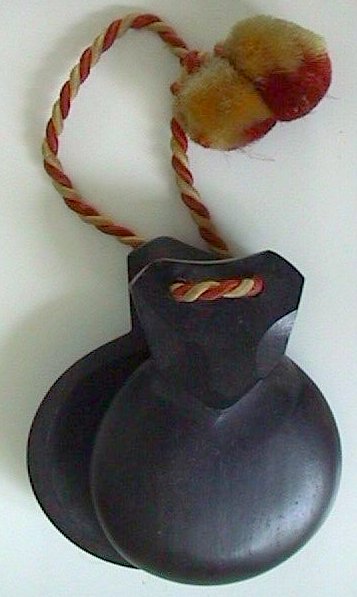
CASTANETS
Concordance: (replaces 'singing' or 'songs' in verse from other translations);
- are a percussion instrument (idiophone) consisting of a pair of concave shells joined on one edge by string. These are held in the hand and used to produce clicks for rhythmic accents or a ripping or rattling sound consisting of a rapid series of clicks. The origins of the instrument are not known. The practice of clicking hand-held sticks together to accompany dancing is ancient, and was practiced by both the Greeks and the Egyptians.
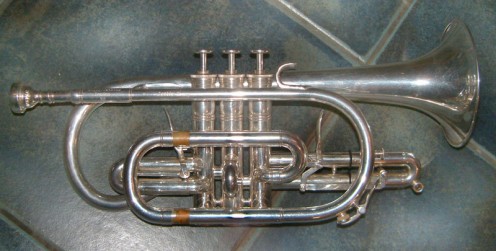
CORNET
Concordance: a musical instrument used on occasions in worship;
- is a brass instrument very similar to the trumpet, distinguished by its conical bore, compact shape, and mellower tone quality. The most common cornet is a transposing instrument, a musical instrument for which written notes are read at a pitch different from sounding note concert pitch, which a non-transposing instrument, such as a piano, would play.
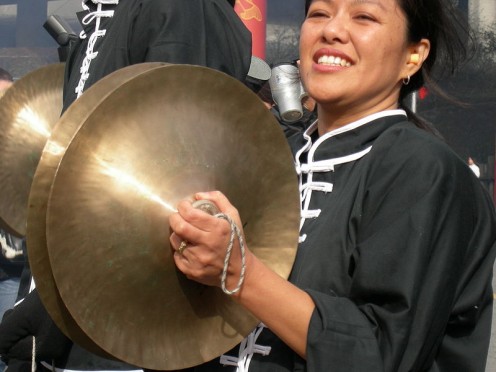
CYMBALS
Concordance: hollow of a vessel; a musical instrument;
- are a common percussion instrument. Cymbals consist of thin, normally round plates of various alloys. The greater majority of cymbals are of indefinite pitch, although small disc-shaped cymbals based on ancient designs sound a definite note. Cymbals are used in many ensembles ranging from the orchestra, percussion ensembles, bands and marching groups. Drum kits usually incorporate at least one suspended cymbal and a pair of hi-hat cymbals.
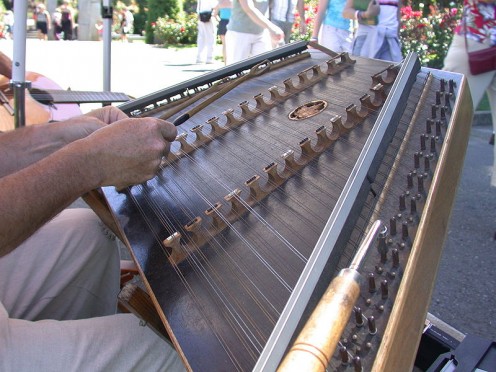
DULCIMER
Concordance: a bagpipe-like (incorrect description) musical instrument used in Babylon (also SEE: psalteries; or zither, harpsichord and piano);
- The "hammered" dulcimer is a stringed musical instrument with the strings stretched over a trapezoidal sounding board. Typically, the dulcimer is set on a stand, at an angle, where the musician, who holds small mallet hammers in each hand, may strike the strings. The dulcimer's origin is uncertain, but tradition holds it was invented in Persia (Iran), as the "Santur", over 2000 years ago. The strings of a hammered dulcimer are usually found in pairs, two strings for each note which are tuned in unison and called a course. As with a piano, the purpose of using multiple strings per course is to make the instrument louder, although as the courses are rarely in perfect unison, a chorus effect usually results like a mandolin.
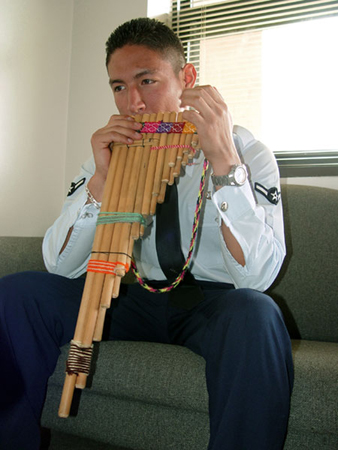
FLUTE (Pan Pipes)
Concordance: a hollow musical instrument; sometimes used in worship;
- is a musical instrument of the woodwind family. Unlike most woodwind instruments with reeds, flutes are aerophones or reedless wind instruments that produce their sounds from the flow of air across openings in one end. Aside from the human voice, flutes are the earliest known musical instruments. A "Pan Flute" named from the satyr in Greek mythology, is an end-blown flute that consists of a series of varied length pipes laced together and closed at one end. It is played by blowing into the different open ends for a desired range of pitches.
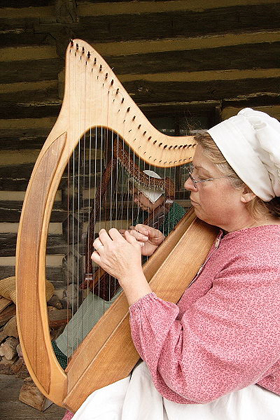
HARP
Concordance: a stringed musical instrument; with many uses;
- is a multi-stringed instrument which has the plane of its strings positioned perpendicular to the soundboard. It is classified as a chordophone by the Harvard Dictionary of Music and only types of harps are in that class of instruments with plucked strings. All harps have a neck, resonator, and strings. Some, known as frame harps, also have a forepillar; those lacking the forepillar are referred to as open harps. Depending on its size (which varies considerably), a harp may be played while held in the lap or while it stands on the floor.
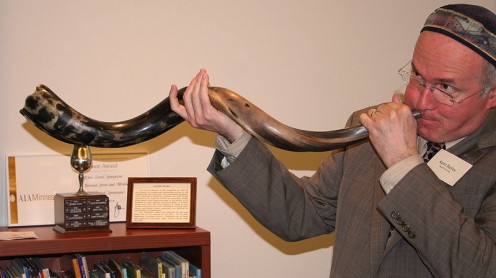
HORN
Concordance: a bone-like protrusion from an animal's head; used for trumpets;
- The blowing horn or winding horn is a sound device by and large shaped like a horn or actually a cattle or other animal horn arranged to blow from a hole in the pointed end of it. This rudimentary device had in former times a variety of functions in many countries where nowadays has lost ground to modern society, in most cases reducing its scope to exhibiting, celebratory or group identification purposes.
*The "SHOFAR" is a HORN, traditionally that of a ram, used for Jewish religious purposes. Shofar-blowing is incorporated in synagogue services on Rosh Hashanah and Yom Kippur. The shofar was also used to announce holy days, festivals, and the Jubilee year. It was also employed in processions, as a musical accompaniment and was used to signify the start of a war. Note that the 'trumpets' described in Numbers 10 are a different instrument, described by the Hebrew word for 'trumpet' not the word for "shofar". In the Temple of Jerusalem, the shofar was sometimes used together with the trumpet in the tabernacle. The shofar was blown in the time of Joshua at Jericho to herald the Angelic armies. The shofar was also commonly taken out to war so the troops would know when a battle would begin. The person who would blow the shofar would call out to the troops from atop a hill, who were able to hear the call of the shofar from their position because of its distinct sound.
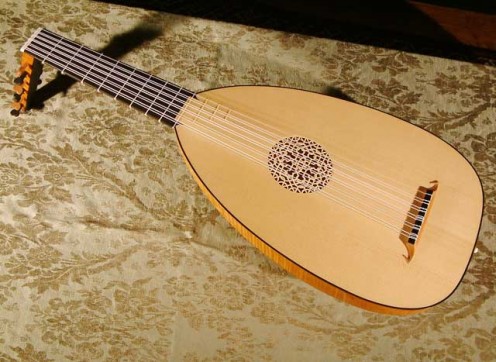
LUTE
Concordance: (replaces 'psaltery' in some translations);
- can refer generally to any plucked string instrument with a neck (either fretted or unfretted) and a deep round back. The origins of the lute are obscure and even organologists debate the very definition of a lute, though most do agree as its referring to chordophones with a neck as distinguished from harps and psalteries. Various types of necked chordophones were used in ancient Egypt (Middle Kingdom 2055 BC-1650 BC), Persia and Armenia. These instruments often had bodies covered with animal skin, and it is unknown exactly when it became replaced with a wooden soundboard.
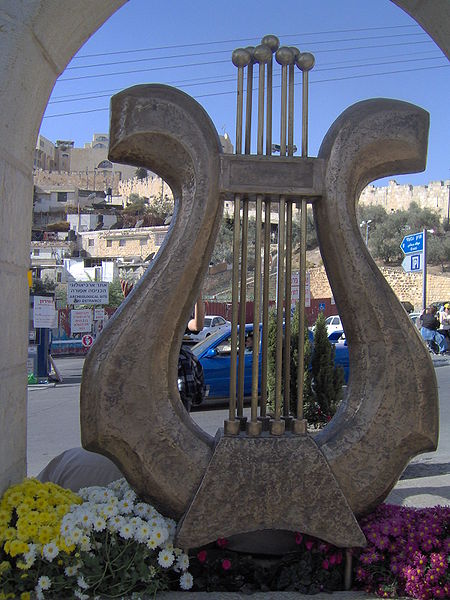
LYRE (or "Kithara")
Concordance: (replaces 'harp' in some translations);
- is a stringed musical instrument well known for its use in classical antiquity and later. The word comes from the Greek "lyra". The lyre of Classical Antiquity was ordinarily played by being strummed with a plectrum (pick), like a guitar or a zither, rather than being plucked, like a harp. The fingers of the free hand silenced the unwanted strings in the chord. The lyre is similar in appearance to a small harp, but with certain distinct differences.
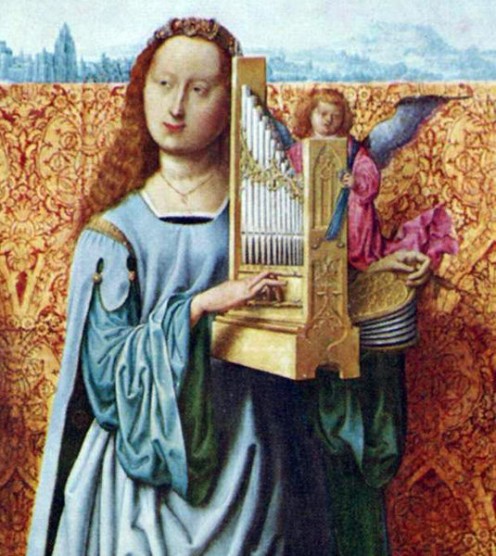
ORGAN (Pipes)
Concordance: a wind instrument of ancient origin; used in entertainment and worship;
- The pipe organ is a musical instrument that produces sound by driving pressurized air (called wind) through pipes selected via a keyboard. Because each organ pipe produces a single pitch, the pipes are provided in sets called ranks, each of which has a common timbre and volume throughout the keyboard compass. Most organs have multiple ranks of pipes of differing timbre, pitch and loudness that the player can employ singly or in combination through the use of controls called stops. The origins of the pipe organ can be traced back to hydraulis in Ancient Greece during the 3rd century BC, in which the wind supply was created with water pressure. The pumps and water regulators of the hydraulis organ were replaced by an inflated leather bag in the 2nd century AD, and a true bellows began to appear in the sixth or 7th century AD.
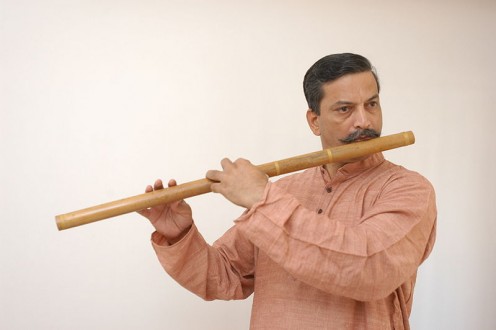
PIPE (Flute)
Concordance: a type of hollow-tubed single Flute;
- a musical instrument of the woodwind family that is an aerophone or reedless wind instrument, producing its sound from the flow of air across a single opening. A number of flutes dating to prehistoric times have been found in the Swabian Alb region of Germany. These flutes demonstrate that a developed musical tradition existed from the earliest periods of human presence.
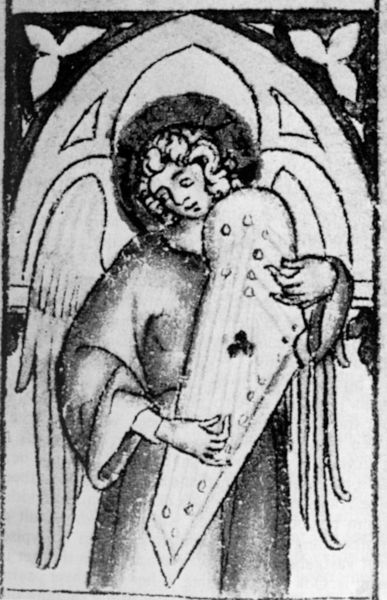
PSALTERY
Concordance: a musical instrument; used in prophecy, processions and worship;
- is a stringed musical instrument of the harp or the zither family. The psaltery of Ancient Greece (Epigonion) dates from at least 2800 BC, when it was a harp-like instrument. Etymologically the word derives from the Ancient Greek (psalterion) “stringed instrument, psaltery, harp” and that from the verb (psallo) “to touch sharply, to pluck, pull, twitch” and in the case of the strings of musical instruments, “to play a stringed instrument with the fingers, and not with the plectron (pick or struming device).”
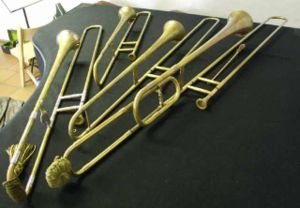
SACKBUT
Concordance: a wind musical instrument; (possible mistranslation for a "harp" used in the Babylonian orchestra);
- refers to a trombone from the Renaissance and Baroque Eras. More delicately constructed than their modern counterparts, historic trombones feature a softer, more flexible sound and they attracted a sizeable repertoire of original chamber and vocal music.
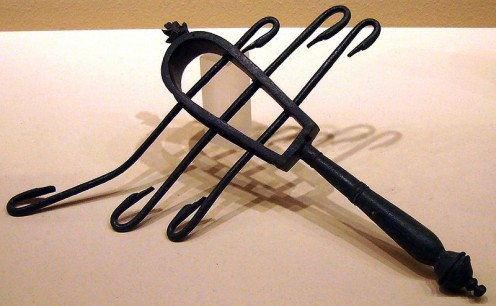
SISTRUM
Concordance: (replaces 'cornet' in verse from other translations);
- is a musical instrument of the percussion family, chiefly associated with ancient Iraq and Egypt. It consists of a handle and a U-shaped metal frame, made of brass or bronze and between 76 and 30 cm in width. When shaken the small rings or loops of thin metal on its movable crossbars produce a sound that can be anything from a soft "clank" to a loud "jangling". The name derives from the Greek verb seio, to shake, and seistron, is that which is being shaken.
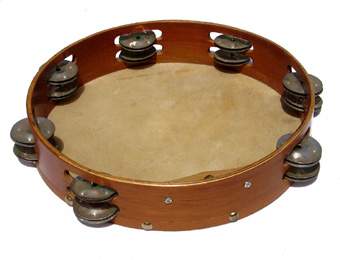
TIMBREL or TABRET
Concordance: a small hand drum; used in entertainment and worship;
- (the 'tof' of the ancient Hebrews, the 'deff' of Islam, the 'adufe' of the Moors of Spain), the principal musical instrument of percussion for the Israelites, similar in construction to the modern tambourine. The word timbrel is used in the Old Testament in both singular and plural form, so as to suggest that the former referred to a hoop of wood or metal over which was stretched a parchment head; while the plural was perhaps used to designate the tambourine with bells or jangles fixed at intervals in hoops. In Nahum 2:7, where the word "tabering" occurs, it means beating on the breast, as drummers beat on the tabret. The Israelites learned to use the timbrel during their sojourn in Egypt, and it has been suggested that as the Egyptians used it to scare away their evil spirit Typhon. The tabret or timbrel was a favorite instrument of the women, and was used with dances, as by Miriam, to accompany songs of victory, or with the harp at banquets and processions; it was one of the instruments used by King David and his musicians when he danced before the Ark of the Covenant. It was also used in the valley of Hinnom at the sacrificial rites.
TRUMPET
Concordance: a wind musical instrument; used to signal God's presence and assist in worship;
- this is the musical instrument with the highest register in the brass family. Trumpets are among the oldest musical instruments, dating back to at least 1500 B.C. They are constructed of brass tubing bent twice into an oblong shape, and are played by blowing air through closed lips, producing a "buzzing" sound which starts a standing wave vibration in the air column inside the trumpet. The predecessors to trumpets did not have valves, but modern trumpets generally have either three piston valves or three rotary valves. Each valve increases the length of tubing when engaged, thereby lowering the pitch.

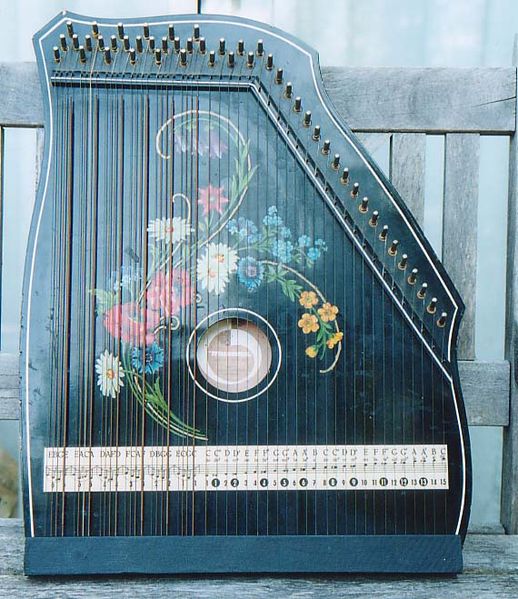
ZITHER
Concordance: (replaces 'harp' in other translations of the Book of Daniel);
- is a musical stringed instrument. The term "citre" is also used more broadly, to describe the entire family of instruments in which the strings do not extend beyond the sounding box. This family of stringed instruments includes: the dulcimer, psaltery, guqin, guzheng (Chinese zither), koto, gusli, kantele, gayageum, đàn tranh, kanun, autoharp, santoor, yangqin, piano, harpsichord, santur, swarmandal, and others. The word "citara" is derived from the Greek word "kithara", which is an instrument from classical times used in Ancient Greece and later throughout the Roman Empire as well as in the Arab world. The word "guitar" is likewise derived from the same root name for the musical instrument "kithara".
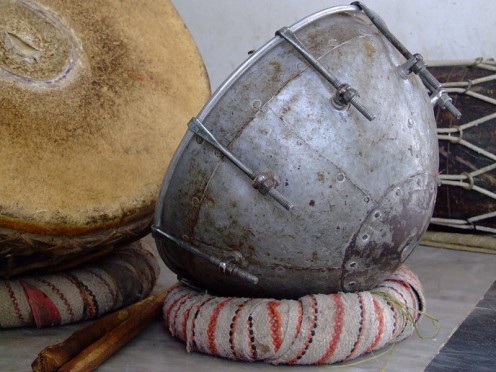
*TIMPANUM or Timpani (pl.)
*Worth mentioning although NOT listed in the scripture of the Holy Bible, but found in other historical texts relating to the ancient Hebrew people.
Timpani (usually a set of 4), also known as "kettledrums", are musical instruments in the percussion family. It has been said that, "the first recorded use of early Tympanum was in ancient times when it is known that they were used in religious ceremonies by the Hebrews" (Modern Method for Tympani-Saul Goodman-1948) and similar forms of drum are used in Jewish folk music today. They consist of a skin called a "head" stretched over a large bowl traditionally made of copper. Timpani are played by striking the head with a specialized drumstick. Unlike most drums, they are capable of producing an actual pitch when struck, and can be tuned.
WORSHIP and PRAISE in Modern Christianity
Over the evolution of the church during the earlier centuries, a tendency to refine and "fine tune" what was "acceptable" for worship and praise, then occurred. When religion moved in the direction of becoming an institution for the worship of God, it became more regimented and ceremonial in its practices. As a result, what was "proper" then began to follow what was ordained by the hierarchy of the office of the church, but not necessarily with practices following exactly how it had been accounted for and recorded in historical scripture. Worship and praise then gravitated towards the use of only certain musical instruments such as resounding pipe organs and deep melodies with specific hymns written to be sung to that type of music. During this period however, some glorious pieces of music have been composed and beautiful songs written to edify our Lord God.
Later, when the reformation of the Christian church began to occur, worship and praise was placed back into the hands of the smaller churches and its people to decide on what was appropriate. Most followed the lead of their newly adopted religious leaders who interpreted scripture in a way that was closer in alignment to their specific variation of faith, and as a result, new practices were adopted accordingly.
Some religious sects became more conservative in their nature while others were open to more liberal approaches for worship and praise. Thus we now have all of the variant forms of religious practices seen in Christianity today.
There are churches that now use many forms of music and song while others only allow a very restricted practice of musical worship if any at all. For example, there are churches do not allow any instruments other than a basic piano or organ to be used, while others regularly incorporate full orchestras or "electric" band ensembles. Likewise in fact, most Jewish synagogues have banned the use of music altogether, now preferring a more conservative and solemn type of worship observance which is completely contrary to their original biblical practices.
Additionally, dance or "making merry" is frowned upon by some faiths while others allow a more unrestricted style of worship openly in their congregations. All of these variant forms of the Christian faith however should realize what scripture actually states historically and take these things into consideration when potentially criticizing the practices of their neighbors in Christ.
In answer to the original reader's question (about DRUMS):
Although it may be true that drums have been used in more "tribal" settings or even in pagan forms of worship, likewise so have many of the "biblical" instruments listed above also been used. This does not mean that "drums" (percussion instruments) or any of these other musical instruments cannot be used to likewise glorify God. Other forms of percussion instruments are recorded as being used in scripture however (CASTANETS and CYMBALS, the SISTRUM, the TIMBREL or TABRET) and the type of modern drums we are accustomed to were just not necessarily commonplace in the Middle East regions at that time. There is evidence to support that Drums or drum-like instruments were used in these regions during the times that scripture depicts. The *TIMPANI for example, are documented as having been used historically by the Jewish people for both worship and secular purposes in ancient times.
*SEE ALSO: http://hubpages.com/hub/MUSIC-and-SONG-WORSHIP-and-PRAISE-2
(section on Traditional JEWISH MUSIC).
Some churches have frowned on the use of ALL TYPES of percussion instruments simply because the volume of the instruments tend to be a bit loud in comparison to other instruments. Percussion instruments can likewise drown out the sounds of an un-amplified chorus or the singing of a choir. For these reasons alone they are not used in many places.
Other "more creative" approaches have been adopted to include the use of drum-sets that are enclosed in special sound-buffering plexiglas encasements that restrict their volume. Likewise, the use of full electronic sound systems can coordinate the volume of all the various musical instruments and vocals to an appropriate mixture that is both uniform and harmonious. It is merely a matter of preference and what that church or ministry has access to as far as resources. That is the real answer to the question.
The main things to reflect are....
Your word, LORD, is eternal; it stands firm in the heavens. Your faithfulness continues through all generations; you established the earth, and it endures. Your laws endure to this day, for all things serve you. (Psalm 119:89-91 NIV)
Keeping in mind that: "ALL THINGS are to serve the Lord's purpose"; whether they be carnal or secular in their origin or completely spirit-filled in nature, the end result is the same. If these devices and means are being used to edify and glorify God as founded in scripture, then their purpose and use therein is quite clear. If they are not being used as such, then the Holy Spirit will convict it accordingly and likewise the intent becomes evident.
Since scripture DOES NOT clearly identify that certain instruments or forms of music should not be used, then ALL instruments and types of music could be applicable solely based on their precise use, with the intent and extent of worship and praise that they offer.
Let the peace of Christ rule in your hearts, since as members of one body you were called to peace. And be thankful. Let the message of Christ dwell among you richly as you teach and admonish one another with all wisdom through psalms, hymns, and songs from the Spirit, singing to God with gratitude in your hearts. And whatever you do, whether in word or deed, do it all in the name of the Lord Jesus, giving thanks to God the Father through him.
(Colossians 3:15-17 NIV)
The main purpose of this article is to emphasize that concerning the form of worship and praise that is befitting to our Lord God, the "rule book" appears to be pretty much wide open in regards to what musical instruments and songs have been used biblically in the past. Scripture is more precise in teaching us how they should be used or for what purpose. The main criteria seems to imply that worship and praise should simply be derived and filled with the Holy Spirit. It should in all forms honor and glorify our Lord, serving Him with both magnitude and respect.
Therefore, since we are receiving a kingdom that cannot be shaken, let us be thankful, and so worship God acceptably with reverence and awe... (Hebrews 12:28 NIV)
-------------------------------------------------------------------------------------------------------
WORSHIP and PRAISE - The Most Important Aspects of Our Realtionship with the LORD GOD! - (Read our Full 3-PART Article Series)
- MUSIC and SONG = WORSHIP and PRAISE (Part 1) Musical Instruments in Scripture
(CURRENT ARTICLE) - MUSIC and SONG = WORSHIP and PRAISE (Part 2) Singing as Used in Religious Practice
What songs are used in worship and praise? It seems that the content and use of the music to truly glorify God is much more important than what instruments, songs or types of music are used. - MUSIC and SONG = WORSHIP and PRAISE (Part 3) Modern Music & Songs in Religion
We live in a more modern era where new inventions and innovations have given us a much larger variety of devices and mediums that we can use to worship and praise God. This allows us more possibilities in the ways that we can glorify the Lord God.
--------------------------------------------------------------------------------------------------------------------------------
Music of Ancient Israel
Other useful HubPages "Well Worth Reading" on this Topic:
- Holiness in Our Worship of God - by Jane Grey
Have you ever asked God to show you His glory? Has it ever occurred to you that the most worshipful act you can bring to God is to ask Him to reveal His nature to you? We would do well to imitate Moses in his... - Satan Opposes Worship (Why Don't I Worship) - by drpastorcarlotta
WELCOME TO PASTOR DR. CARLOTTA'S COUNSELING CENTER. More than anything we will ever do, Satan will try to stop us from worshiping. God seeks worshipers. Firstly, because he knows God seeks... - Worship Him in Spirit and Truth - by Judah's Daughter
"But an hour is coming, and now is, when the true worshipers shall worship the Father in spirit and truth; for such people the Father seeks to be His worshipers. God is spirit, and those who worship Him must worship in spirit and truth." (John 4:23-2 - The Angels' Song of Praise - by Rev Lady
In ancient times, "Glory to God in the highest, and on earth peace, good will toward men," was known as the Angelic Hymn.
--------------------------------------------------------------------------------------------
You too can express yourself, your opinions and what "gems of knowledge" that you wish to share with others...
Relate something interesting, earn rewards and attract more readers by writing what's on your mind at Hubpages [ CLICK HERE ].
--------------------------------------------------------------------------------------------
-------------------------------------------------------------------------------------------------------


Building for the glory of Christ's coming Kingdom!
Here on the HubPages® of The Faith Network, we arlaying down the framework for an extended internet-based Ministry and outreach. More content will be added on a regular basis... We invite you to check back often and see what is new.
The FAITH NETWORK provides and promotes practical Biblical teaching, dedicated devotional topics, relevant faith-based resources, and powerful spiritual insights on matters of faith and everday moral living practices for individuals, churches, charitable organizations, Christ-based businesses, and other ministry related efforts.
While you are browsing, see how other Christian HubPages® Authors are writing useful information and creating successful Hub websites. Also check out the official Hub Page Community on Christianity-The Bible and Jesus.
Pastor's Blog - http://www.ForeverinChrist.org
Ministry Site - http://www.Christ4Ever.org
More information about us here on HubPages: http://hubpages.com/hub/Forever-in-Christ
God bless and see you all soon!
